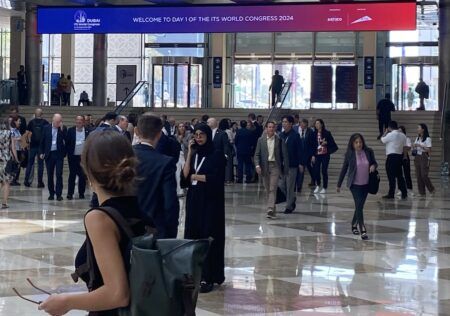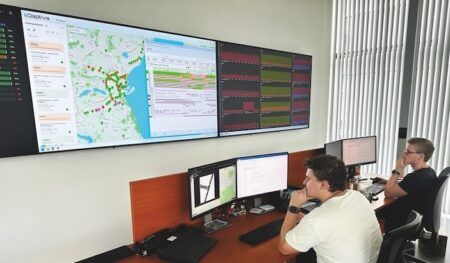Researchers at the US Department of Energy’s Oak Ridge National Laboratory (ORNL) are partnering with the city of Oak Ridge in Tennessee to develop UrbanSense, a comprehensive sensor network and real-time visualization platform that helps cities evaluate trends in urban activity.
UrbanSense passively collects anonymous, open-source data from cellular towers to generate real-time estimates of population density in cities. Insights on how people interact with urban infrastructure will help cities like Oak Ridge assess their needs and plan effectively for future development. The project, initiated by ORNL’s Urban Dynamics Institute (UDI), centers on addressing cities’ real-world challenges through applied urban science. The prototype designed for Oak Ridge monitors population density, traffic flow and environmental data including air and water quality, with a total of seven sensors to be installed in the city.
The platform gathers open-source, anonymous data from virtual and physical sensors to generate population dynamics in real-time. Virtual sensors include online public data sets such as the AirNow website, which reports national air quality information, and other self-reported data from social media, such as Facebook ‘check-ins’, and Twitter posts. UrbanSense also uses sensors that passively collect anonymous cellular tower data from open broadcasts by mobile networks as they manage their capacity, which can help estimate population density. Commercially available physical sensors that monitor traffic flow, water and air quality can provide additional information relevant to strategic planning on a city level.
The cloud-based system, supported by ORNL servers, captures multimodal trends and displays real-time dynamics via an online dashboard. ORNL’s UDI researchers Teja Kuruganti and Gautam Thakur are collaborating with Oak Ridge’s director of administrative services, Bruce Applegate, on the design and deployment of UrbanSense.
“We want to give cities like Oak Ridge a better sense of their population distribution and dynamics,” said Kuruganti. “We are using sensors to generate observations and insights to help cities measure their growth and success. Our design is scalable and can include additional sensors, so it can easily be tailored to the unique needs of individual cities and the kinds of trends they are interested in examining.”
Applegate noted, “The UrbanSense platform provides city staff with a 21st-century tool to analyze the rapid changes our community is undergoing. The real-time data collected will not only increase our understanding of the city’s usage by residents and visitors, but will also aid in the selection and prioritization of city-funded projects. UrbanSense can shift a municipality from a day-to-day approach to a longer-range vision of urban development.”




